|
When my plane landed in Prague on August 8, 2008, friends from all over started calling and asking where I was. I had returned from Georgia on the very same day the war began there. That five-day war has been added to the list of “the shortest military conflicts in history” or “the Blitzkriegs of the 21st century”—the definition depending on whether or not a difference can be found between a war and a military conflict. Despite the “lightning speed” of the war, two weeks after its termination there appeared colourful books on sale in Moscow about the history of the conflict, informing the public how “bad Georgia” had engaged in genocide against the Ossetians for years and years until “fair Russia” put an end to that disgrace. Perhaps this is all true; history has always been contradictory. Still, books written, illustrated and published at that speed stink of propaganda. Anyway, while my plane was leaving the Caucasus, an area that had already become dear to me, Georgian military jets were bombing Ossetia, and Russian planes, just a little later, entered Georgian airspace at the very same time. Later on, everyone told me I had been lucky, but I kept recollecting in despair how I had been trying to change the ticket and how I had failed to, and I kept thinking that I should have been there. I cannot explain what precisely this would have changed, but I simply felt that I could no longer live pretending that the war did not exist. All this began when, in a Moscow bookshop called Falanster, a strange magazine titled Art of War caught my eye. I bought all the issues and began to read them in small doses, unable to digest such artwork. Boys on tanks, heads in bandages, dirt, blood, amputated limbs, tormented children, despair—the usual indications of any war's absurdity. At the very same time, one of our authors, Konstantin Rubakhin, offered to Umelec a series of the Chechen photos for publication. The photos looked vigorous. Indeed, peaceful life is being arranged, the universal Mars and Snickers and bananas are being sold, men with cheerful faces cheer on their favorite teams, and women in headscarves covering their faces sweep the streets completely ruined by bombing. Gentle green grass sprouts forth amid the detritus. Well, yes, the grass; it will always grow. I did not want to be the grass; I wanted to learn “a truth of my own.” I wanted to understand how it all had begun and how it happened that people, who had lived together for decades, suddenly began to kill each other. I had no special ideas about art in my head. But it was important to understand how all those vacant eyes appeared in those photos, and that old woman on the ground—killed by a shell splinter—her bag nearby with a long loaf of white bread sticking out; perhaps she was on her way home after shopping when a bomb struck. And there she was, accompanied by the caption, The Art of War. ARMENIA: NAGORNO-KARABAKH When I went to the Caucasus beginning in Armenia where, in 1988, a conflict broke out around the Nagorno-Karabakh region. That was an ethno-political confrontation called the Karabakh War (1991 – 94), between the Armenians and the Azerbaijanis over land that still remains one of the unrecognized states. This particular conflict served as a sort of catalyst, triggering other incidents (excluding the Chechnya to a certain extent; there canisters filled with the local gasoline seen everywhere explain it all). I admired the severe beauty of Armenia's geography and people who were not only sincerely and boundlessly hospitable, but also showed no signs of xenophobia. They are glad that “they have” Nagorno-Karabakh and Shusha. Some of the people still remember the horrors of that war and the terrible time when the country appeared in complete isolation. But nobody speaks about “the bad Azerbaijanians,” only about hot-headed and unreasonable people who once started all that bloody madness. There is some art lingering from Nagorno-Karabakh during that period—the hard times of war. As Ruben Arevshatyan describes, “There were matters other than art to deal with. And many people simply did not survive.” One of these people was the artist Alexander “Sasha” Melkonian. Alexander Melkonian was born in 1952 as a third generation army brat. Traveling the traditional path of a Soviet artist—a member of the Artists' Union and participant in local and Soviet Union exhibitions—Sasha joined the Karabakh National Movement in 1988. In 1989, he headed the “Aspet” (The Knight) School of Rescuers, which turned into the Special Training and Consulting Group “Aspet” when the war began and fulfilled secret tasks at “the territory of the enemy”—in Azerbaijan and in Nagorno-Karabakh. While there, he was wounded. After the war ended in 1994, he participated in exhibitions such as the Austrian project titled, “The Parallel Realities” (Yerevan, 2000) and “Manifesta 3” in Slovenia. In 2001 he was invited to Trieste (Italy) to participate in the project, “The House of a Man and a Woman.” Ruben Arevshatyan, in his article "The Pacified Spirit of Bellicosity: About Alexander Melkonian" 2002 article in Springerin describes Melkonian's return to the art scene in 1995 as "the beginning of a new, quite intensive creative period for the artist. In his actions and installations, the artist emphasized the dramatic, in the local art scene on the aestheticism and the philosophy of the lonely individual, frustrated by ideological and social pressures. He specified his art as ‘art-military,’ and besides the militant theme in his works, he has been strictly following the conceptions and structural principles of the ‘art of war.’” But, as arevshatyan continues, “the cardinal difference between his art and the ‘art of war’ was the shift of concentration from the objective of the militant systematic character to the subjects of the system that reside in an irrational state of rush for the object. This dramatic, conflicting correlation of the unit to the whole persists in his 8-meter high pillar of greatcoats – “Royal Infantry”, in the transforming installation Birthplace and Grave of the Great Viking, Mimicry, Super-mobile Object, and other actions” Melkonian passed away in February, 2002 at the age of 49. That war generated a whole series of patriotic videos accompanied by the sounds of the national Armenian songs, showing courageous-faced soldiers going to battle for their native land. The majority of these videos were already created in 2000. YouTube will satisfy your inquisitiveness in this regard—strongly recommended for the hot and romantic. GEORGIA: SOUTH OSSETIA From Armenia, I traveled to Georgia. There, in Tbilisi, I saw the most joyful and multinational courtyards one can possibly imagine. The home I stayed at was a very poor one, with nothing of neighboring Armenia's pride. Just near the entry there lived Georgians, Ingushs, Armenians, Azerbaijanis, Chechens, Ossetians, and Russians. During hard times, they simply removed the tablets from doors so that it was not clear who was who, and continued to live together and to help each other. Everyone speaks all the languages, and the songs are sung by a wonderful polyphony. The courtyards are especially lively late in the evening when the temperature drops, and everyone goes out in the street. The yards in Tskhinvali looked exactly the same. Until August 8, 2008. I have nothing to say about this war. Everyone was shocked then. Nobody could understand anything. They would talk about the American plot, the aggression of Russia, the madness of Saakashvili. As soon as August 9, photos began appearing on the Internet. Those first ones were the most shrilly awful, and they became the most known, having caused a wave of disputes about their authenticity. This refers to Gleb Garanich’s and George Abdaladze’s works: (drugoi.livejournal.com/2691106.html#cutid1). The participants especially enjoyed discussing how ridiculously, from their point of view, this or that corpse or wounded man on the photo was looking, or such questions as “there used to be a plastic bottle here in the previous photo, and where has it gone now?” Or: “An allover filthy boy is diligently posing near a granny who has already been lying in three other photos in three different places. In the fourth photo, a boy with a wounded leg is also holding it suspended and bending at the knee. I DO NOT BELIEVE THIS!!!! While those stupid Westerners will. It is amusing to look, how in the second photo the corpse is holding the woman who is holds it with its hand.” (npest.moy.su/forum/42-340-1 )(August 17, 2009 “About the BBCs, Reuters, CNNs and other RTVIs”) On Dmitry Bushuev’s “listopad” blog on Livejournal (listopad.livejournal.com/254813.html the discussion touches upon the moments that have most revolted them in what they consider to be staged photos by George Abdaladze. “Suddenly in the exposure of the first frame on one and the same square meter of the ground there appears a surgeon with his face hidden under the mask (!), obviously not a hospital attendant of “the first aid “, and a “starched” nurse. Mind – there appears also the third actor on the same square meter of the waste ground for a mass character of the scene! And why in both of the photos the same Georgian is lying as though dead, but in different poses and in different places? As for the second take of the second picture, the miracles of staging could be seen even by a housewife. The square meter of the exposure encloses two soldiers bearing “a “wounded” boy with an indifferent look (in shock?!), while the vociferous weeper has already calmly stepped aside perhaps preparing for the fourth take. And, the soldier on the left is standing on his place while the second soldier has had time to take a run”. It is hard to say if there is “a moment of truth” in this, but there is undoubtedly “a moment of art” here – people revel in the discussion about what leg and whence is sticking out, trying hard not to believe that the blood is blood and most certainly not paint; that the destroyed houses are not scenery. That in general is difficult to define; how the face of a person should look when he or she is in shock and how expressively or indifferently he or she should suffer. It seems that if someone in the photo had been wearing a smile warped with madness, the arguers would be much pleased. The indignations of the Russian bloggers at the false photos were so great, that they began to demand censorship on the Internet in order to stop the distribution of obviously false anti-Russian data and moods. newsru.com/russia/10aug2008/livejournal.html MEANWHILE IN OSSETIA Krig42 - Dmitry Steshin krig42.livejournal.com/2008/08/15/ "I inform those nagging at insufficiently ruined Tskhinvali - I shot three dozen video reels, having made a sort of a ‘virtual excursion’ around Tskhinvali. I passed the town on the tank armour both from the North to the South and from the West to the East, shooting video nonstop. I was shooting the cellars with people dying in them. I was shooting a woman with two children being dug out of a grave in a kitchen garden. I shot a vehicle in which two children had been burnt. I was shooting the stinking cellars of the city hospital. I think you will be impressed with these videos. I will post up the videos with swollen corpses and the scorched leg of a Georgian tankman when I come back home…” INSTEAD OF AN EPILOGUE While choosing photos, first from Chechnya—“Well, there is nothing special about them.” My colleague said, “Every city after a war looks about the same.” Then from Tskhinvali, with—well, yes—the similarly charred ruins, it is possible to compare some of them with the consequences of the earthquake that I saw in Gyumri (in Armenia, former Leninakan). I thought, no, there is nothing tragic about them—the romantic sight will always rest against a beautiful landscape emerging on the horizon—a background for the ruins of the houses looking absolutely the same as in Georgia. Then, I looked at the photos of the dead. Crowds of various people killed in various ways. I was looking at them and thinking, “Well, yes, there’s really nothing special about them. After all, we are an art magazine. They do not differ at all—the corpses in Ossetia from the corpses in Chechnya or Gaza. The photos remain the same—lots of blood, ugliness, suffering. No art; only the stark realities of life.” I thought to myself, “‘The Art of War.’ Who has thought up this term? What is behind it? The photos of the ruined houses and mutilated bodies? The reflections of the artists on this?” I do not know. I still do not know. A day prior to the beginning of the war, I reached Batumi where I, with my strange, off-political illusions, hoped to get over to Sukhumi, to Abkhazia, and from there to the Northern Caucasus, to Chechnya, Ingushetia, and then back to the south through Dagestan to Azerbaijan. My ideas about war at that time were absolutely bookish. Now, being pressed down by the quantity of the received information, I wish to return there. I do not know what will change if in our magazine a constant rubric titled, “The Art of War” appears. I just know that I cannot be joyful, green, ever-growing grass.
Recommended articles

|
|
There is nothing that has not already been done in culture, squeezed or pulled inside out, blown to dust. Classical culture today is made by scum. Those working in the fine arts who make paintings are called artists. Otherwise in the backwaters and marshlands the rest of the artists are lost in search of new and ever surprising methods. They must be earthbound, casual, political, managerial,…
|

|
|
"In Cameroon, rumours abound of zombie-labourers toiling on invisible plantations in an obscure night-time economy."
|

|
|
An American poet was invited to the White House in order to read his controversial plagiarized poetry. All tricked out and ready to do it his way, he comes to the “scandalous” realization that nothing bothers anyone anymore, and instead of banging your head against the wall it is better to build you own walls or at least little fences.
|

|
|
Goff & Rosenthal gallery, Berlin, November 18 - December 30, 2006
Society permanently renegotiates the definition of drugs and our relationship towards them. In his forty-five minute found-footage film The Conquest of Happiness, produced in 2005, Oliver Pietsch, a Berlin-based video artist, demonstrates which drugs society can accommodate, which it cannot, and how the story of the drugs can be…
|
|







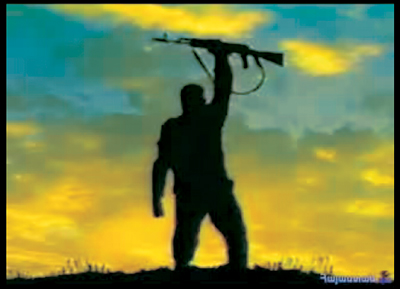















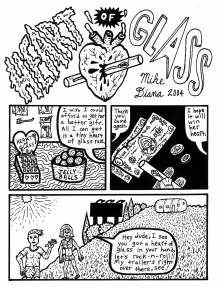




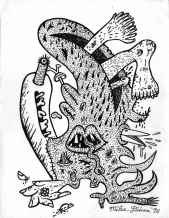
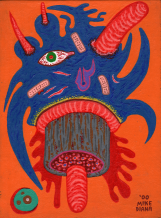
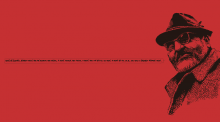



 New book by I.M.Jirous in English at our online bookshop.
New book by I.M.Jirous in English at our online bookshop.
Comments
There are currently no comments.Add new comment